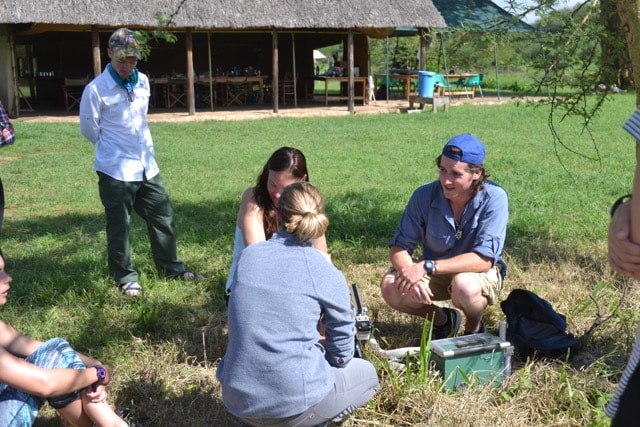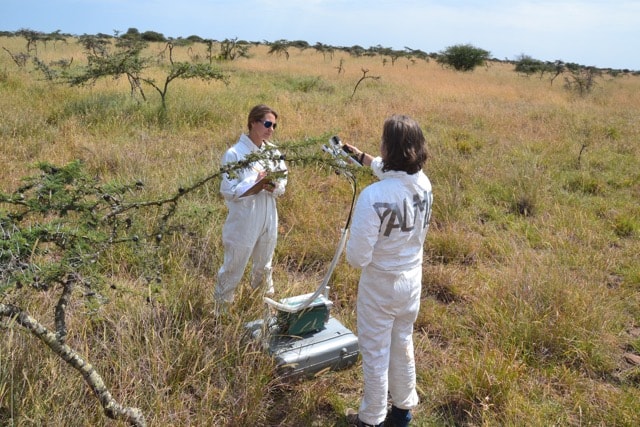 The Eco Tones Podcast is curated by Patrick Milligan, a 2nd year PhD student in the Biology Department at UF. Milligan works in Dr. Todd Palmer’s lab, which generally works on community ecology and the ecology and evolution of species interactions. Milligan’s own research investigates the effects of the “big-headed ant” species which has invaded Laikipia, Kenya among other places. As Milligan explains, Kenya is the third largest exporter of cut flowers in the world. As such, there is a great deal of agricultural trade to and from Kenya, which has led to the introduction of a particular big-headed ant species originally from Ethiopia. One reason why these ants are so successful as an invasive species is that, unlike typical ant species, they can have more than one queen in a given colony, and even up to 15-20. Further, big-headed ants have little variation in the scent glands that they use to identify each other, meaning that ants can move freely into and out of other big-headed ant colonies. This movement is so free-forming that super-colonies can develop, such that the beginning and end of individual colonies can be difficult to determine.
The Eco Tones Podcast is curated by Patrick Milligan, a 2nd year PhD student in the Biology Department at UF. Milligan works in Dr. Todd Palmer’s lab, which generally works on community ecology and the ecology and evolution of species interactions. Milligan’s own research investigates the effects of the “big-headed ant” species which has invaded Laikipia, Kenya among other places. As Milligan explains, Kenya is the third largest exporter of cut flowers in the world. As such, there is a great deal of agricultural trade to and from Kenya, which has led to the introduction of a particular big-headed ant species originally from Ethiopia. One reason why these ants are so successful as an invasive species is that, unlike typical ant species, they can have more than one queen in a given colony, and even up to 15-20. Further, big-headed ants have little variation in the scent glands that they use to identify each other, meaning that ants can move freely into and out of other big-headed ant colonies. This movement is so free-forming that super-colonies can develop, such that the beginning and end of individual colonies can be difficult to determine.The invasion of this big-headed ant species is important because they kill a lot of native ant species in the area, including the native ants which live on acacia trees. It turns out that these native ants play a big role in protecting acacia trees from destruction by elephants. When an elephant approaches a tree and begins to strip the bark or eat the branches, the native ant population residing on the tree will swarm up the trunk of the elephant stinging and biting, quickly driving the elephant from the trees. However, with the introduction of the big-headed ant species, native ant populations are dying off leaving acacia trees unprotected. Little is known about how big-headed ants affect the Laikipia ecosystem. Studying both the species and identifying the effects they are having on species diversity and conservation in Laikipia are the first steps to address the invasive species.

In addition to his interesting research, Milligan also curates an Eco Tones Podcast focused, not on his research, but on other research being conducted by ecologists and biologists. Currently, there are 3 full podcast episodes. Similarly, Milligan also curates a blog on his own research hosted by National Geographic available here, including a new post covering the ability of dung beetles to withstand the big-headed ant invasion and encouraging all of us of our potential to become involved in biology, ecology, and conservation. Nice work Pat!